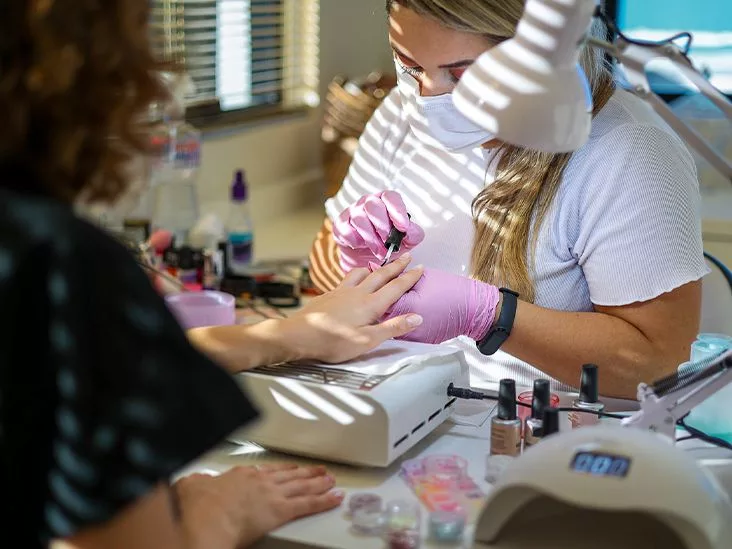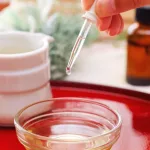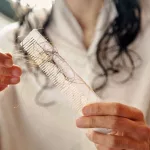Hey there, nail‑loving friend! If you’ve ever sat in a salon chair wondering whether to go for a shellac manicure or the classic gel nails, you’re not alone. The good news is that the answer isn’t as mysterious as a secret‑service password—it’s all about what you need, how you live, and a little bit of science. In the next few minutes, I’ll walk you through everything you should know, from what the formulas actually are to how they affect your natural nails, and I’ll sprinkle in some personal anecdotes so you feel like we’re chatting over coffee.
Quick Verdict
Shellac is the kinder‑to‑your‑nails sibling. It’s a hybrid polish that cures under a light, lasts about 10‑14 days, and peels off in a gentle 10‑15 minute soak. Gel is the powerhouse—thicker, more durable (up to three weeks), can be built into extensions, but it demands a longer, sometimes abrasive removal.
Below is a quick “at‑a‑glance” table you can bookmark for your next salon visit.
| Feature | Shellac | Gel |
|---|---|---|
| Typical wear | 10‑14 days | 2‑3 weeks (soft) / 3+ weeks (hard) |
| Removal time | 10‑15 min soak | 15‑30 min soak + filing (hard gel) |
| Can add length? | No | Yes (builder gels) |
| Cost (average U.S.) | $30‑$45 | $40‑$70+ |
| Gentleness on nails | Higher | Variable (harder can be harsher) |
Now that you have the TL;DR, let’s dive into the nitty‑ gritty.
Composition & Application
How Shellac Is Made
Shellac isn’t the wood finish you might be thinking of—it’s a brand‑specific hybrid created by CND. The formula mixes the polymer‑forming power of gel with the glossy pigment of traditional polish. When you cure it under an LED or UV lamp, tiny methacrylate monomers link together, creating a flexible yet resilient film. According to Healthline, this hybrid nature is why Shellac feels “gentler” on the nail bed.
How Gel Is Made
Gel, on the other hand, is pure liquid gel—essentially acrylic monomers and oligomers that polymerise under UV light. It’s brand‑agnostic, meaning you’ll see countless variations (soft gel, hard gel, builder gel). The result is a thicker coat that hardens into a very tough shell.
Step‑by‑Step Side‑by‑Side
Both start with a clean, lightly buffed nail, but the workflow differs a bit. Here’s the typical sequence:
| Step | Shellac | Gel |
|---|---|---|
| Prep | Light buff, push cuticles, wipe with alcohol | Same prep, optionally apply a primer for better adhesion |
| Base coat | Thin layer, cure 30‑60 s | Base coat, cure 30‑60 s |
| Color | Brush on, cure 30‑60 s (usually 2 coats) | Brush on, cure 30‑60 s (2‑3 coats) |
| Top coat | Same as color, cure 30‑60 s | Top coat, cure 30‑60 s |
| Total time | 45‑60 min | 60‑90 min (longer if building extensions) |
Pro tip: Use a professional 36‑watt LED lamp (or stronger) for a consistent cure. A weak lamp can leave a tacky finish that chips early.
Durability & Longevity
Shellac Durability
Because Shellac’s film is thinner, it typically survives 10‑14 days before the first signs of wear appear—usually a small chip near the tip. That’s still far longer than a traditional polish, which often chips within a few days.
Gel Durability
Gel’s thicker layer translates to superior resistance to chips and dents. Soft‑gel polish can stay flawless for up to three weeks, and hard‑gel extensions can last even longer, making them the go‑to for anyone who wants a low‑maintenance look for a month or more.
Factors That Influence Longevity
- Hand hygiene: Frequent hand washing or exposure to chemicals speeds up wear.
- Nail growth rate: Faster growers may see gaps appear sooner.
- After‑care: Applying cuticle oil keeps the surrounding skin hydrated and reduces lifting.
- Season: Winter’s dry air can make nails brittle; extra oil helps.
Nail Health Impact
Shellac’s “Gentler” Reputation
Many nail technicians swear by Shellac for clients with fragile or thin nails. The hybrid formula is softer, meaning it lifts off with less aggressive filing. Secret Spa notes that the removal process typically doesn’t require any scraping, which in turn reduces the risk of nail thinning.
Potential Risks of Gel
Hard‑gel, while strong, can be a double‑edged sword. Because it adheres tightly, removal often involves filing away the top layer—a process that can thin the natural nail if done too frequently. Over‑use of any UV‑cured product without breaks can also lead to dryness. Dermatologists recommend giving your nails a “breathing break” of at least a week between full‑coverage applications.
Expert Insight
Dr. Samantha Lee, a board‑certified dermatologist, explains, “Both shellac and gel are safe when applied by a trained professional. The key is proper removal and allowing the nail plate time to recover.” (Citation: American Academy of Dermatology).
Removal Process
Shellac Removal Made Easy
One of the biggest selling points for Shellac is the quick, painless removal. Here’s the typical salon approach:
- Soak a cotton ball in pure acetone.
- Wrap each nail with the soaked ball and a small piece of foil.
- Wait 10‑15 minutes.
- Gently push the softened polish off with a wooden cuticle stick.
No filing needed, which means lower odds of damaging the natural nail plate.
Gel Removal (Soft vs. Hard)
Soft‑gel removal is similar but usually takes 15‑30 minutes, and a light filing may be needed to lift the edges. Hard‑gel, used for extensions, often requires a more aggressive approach:
- Longer soak (20‑30 minutes).
- Delicate filing or a specialized drill to break the bond.
- Extra moisturizing afterward to replenish lost oils.
If you’re a DIY enthusiast, consider investing in a reputable removal kit and always follow a gentle protocol. Otherwise, a professional removal is the safest route, especially for hard‑gel.
Cost & Salon Experience
Price Comparison
On average, a Shellac manicure runs about $30‑$45 in most U.S. cities, while a standard gel service can range from $40‑$70+, especially if you opt for builder gels or extensions. The price difference often reflects the extra time and materials (harder gels, extra curing cycles).
Time Investment
If you’re juggling a busy schedule, the roughly one‑hour Shellac appointment may fit better than the 90‑minute or longer gel session. That said, if you love the idea of going weeks without a touch‑up, the extra time might be worth it.
DIY vs. Professional
Both options can be done at home with a quality LED lamp and proper polishes. However, removal—particularly of hard‑gel—can be tricky. My friend Maya tried removing her hard‑gel at home and ended up with a nail that looked like a sandpaper surface. Lesson learned: for hard‑gel, let the pros handle it.
Choosing Your Fit
Ask Yourself These Questions
- Do I need extra length? If yes, gel (builder) is the answer.
- Is quick removal a priority? Shellac wins here.
- What’s my budget? Shellac is generally friendlier to the wallet.
- How often do I change color? For frequent switches, Shellac’s 2‑week cycle is convenient.
- Do I have fragile nails? Shellac’s gentler peel is kinder to weak plates.
Real‑World Scenarios
Busy Mom – Jenna, a mother of two, prefers Shellac because she can pop into a salon after school drop‑off, enjoy a 45‑minute session, and have nails that look flawless for the two weeks until her next mini‑vacation.
Construction Worker – Luis spends most of his day with his hands covered in dust and chemicals. He chose hard‑gel extensions because they survive the rough work environment for up to 3‑4 weeks, sparing him the hassle of frequent touch‑ups.
Expert Tips & Best Practices
Nail‑Tech Recommended Prep Routine
1. Lightly file the surface to remove shine.
2. Push back cuticles and clean the nail bed with an alcohol wipe.
3. Apply a thin, even base coat and cure fully.
4. Finish with a nourishing cuticle oil after the session.
After‑Care for Longevity
- Apply cuticle oil daily—especially in winter.
- Wear gloves when doing dishes or using harsh chemicals.
- Avoid using nails as tools (no opening cans!).
Seasonal Adjustments
During dry months, add an extra coat of cuticle oil before bed. In the summer, protect your manicure with a quick hand‑cream rub after swimming to prevent chlorine streaks.
Pro‑Salon Checklist (Downloadable PDF)
If you love checklists, we’ve put together a printable “Salon Ready” list you can print and bring to your next appointment. It covers prep, after‑care, and questions to ask your technician. (You can request the PDF via our contact form.)
Final Verdict
So, which side of the Shellac vs Gel debate should you pick?
If you value gentle removal, a lighter feel, and a lower price tag, Shellac is your best friend. It’s perfect for those who love switching colors often and want a quick salon visit.
If you need maximum durability, the ability to add length, and are okay with a longer removal process, go for gel—especially hard‑gel if you’re after extensions.
Either way, the most important thing is to let a qualified professional apply and remove the product, give your nails occasional breaks, and keep them moisturised. Your nails will thank you with healthy growth and a glossy shine that makes you smile every time you catch a glimpse of your hands.
What’s your nail story? Have you tried Shellac or gel before? Drop a comment below or share your experience on social media—let’s keep the conversation going! If you have any lingering questions, feel free to ask. Happy polishing!


















Leave a Reply
You must be logged in to post a comment.